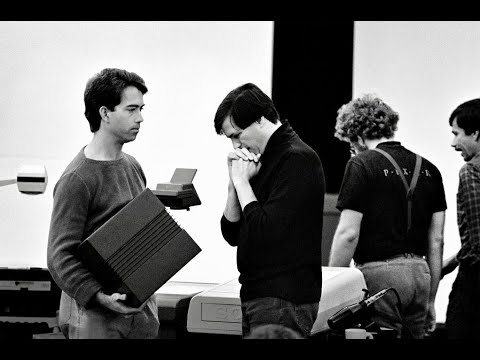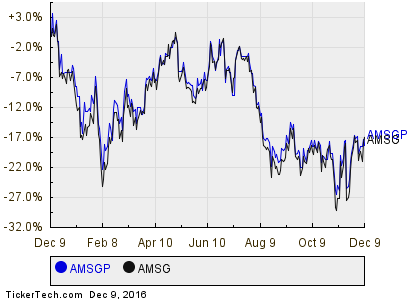Difference between ROE and ROA Finance


When the ROCE is 35.29% in the above case, it means that the total capital of the company has a payback of a little below 3 years. ROCE is a better measure when the business has a long gestation like in power, telecom and internet where the ROE may not really be relevant. There are no guarantees in the share market so you must be very, very careful with any investment decisions you make.

Thus, a decline in the investment in the company can positively affect the ROE of the company. The shareholder’s equity is the remaining claim/profits that the shareholders have after all the debts of the corporation for a given period have been cleared. Other than those otherwise indicated and agreed by You, this Website do not collect or store or share your Personal Information. Aditya Birla Capital is the brand and accordingly all products and facilities are provided by respective ABC Companies as applicable. All investment decisions shall be taken by you in your sole discretion. You are advised to read the respective offer documents carefully for more details on risk factors, terms and conditions before making any investment decision in any scheme or products or securities or loan product.
Return on Invested Capital (RoIC)
Nothing on the Website or information is intended to constitute legal, tax or investment advice, or an opinion regarding the appropriateness of any investment or a solicitation of any type. You are therefore advised to obtain your own applicable legal, accounting, tax or other professional advice or facilities before taking or considering an investment or financial decision. Here, EBIT is the earnings of the company before interest and tax payments have been made.
The ratio of higher value always has the edge over ratios of lower value, but one must not compare them to the proportions of other companies in the industry. Because each industry has a different level of investors and income, ROE cannot be used to compare companies outside of their industries effectively. Significant debt or inconsistent profitability are the most common causes of negative shareholder equity. There are exceptions to this rule for profitable companies that have used cash flow to repurchase their stock. For instance, Y company has been losing money for several years, and they record each year’s losses as a “retained loss” on the balance sheet in the equity section. The losses faced by company Y have a negative value and reduce shareholders’ equity.

This monetary metric is expressed in the form of a percentage which is equal to web earnings after tax divided by the average shareholders’ fairness for a specific time period. The return on common equity refers back to the performance of an organization over a monetary year. This ratio is an adjusted model of the return of equity that measures the profitability of a company. An important measure used to calculate the average cost of capital the company has to pay for its investors infusing the funds into the company, is termed as the Weighted Average Cost of Capital or WACC. Simply put, every company finances its assets either through debt or equity or mostly, a mix of both. WACC is the average of the costs of the various types of financing provided by the investors.
Under Invest
After all, one of the main goals of management is to generate higher return on assets. A successful business is one where the management is able to generate maximum profit from limited resources . Fitri Sukmawati and Innes Garsela 3 investigated the relationship between the return on assets and the return on equity of a company’s stock price. In this research, the author used descriptive-quantitative analysis, which included the application of the classical assumption test. Multiple linear regression analysis, multiple correlation analysis, determination, the t-test, and the f test are some of the statistical techniques used by the author.
Does ROE increase if ROA increases?
The Difference Is All About Liabilities
This equation tells us that if a company carries no debt, its shareholders' equity and its total assets will be the same. It follows then that their ROE and ROA would also be the same. If that company takes on financial leverage, ROE would rise above ROA.
The ROE must be compared to the historical ROE of the company and the industry’s ROE average in order to get a complete picture and must not be looked at in isolation. ROE incorporates the impact of leverage since it is post-interest appropriation. Consequently, it represents what equity shareholders retain after servicing debt. ROCE measures the operating performance of the company and how it compares with the equity and debt capital of the company. ROE considers interest as a cost, while ROCE considers interest as a return.
An organisation with a good Return on Equity value is subjective to the performance of its peer companies. A return on equity value that is alarmingly high can indicate variegated problems. If you are comparing the ROE ratio of two companies with the help of DuPont Analysis, roe vs roa you can quickly point out the facet in which one company is better than the other. Rate of return can refer to returns from all avenues of investment. Learn how to analyze the cash levels of a company and it’s ability to pay off liabilities using liquid assets.
Although a high and consistent ROE is typically preferable, the industry should be taken into account when evaluating the absolute value. Meanwhile, the preferred dividends, which receive debt-like treatments, should be deducted from net income. Various accounting restrictions, like depreciation rate, increasing project life, etc., can influence the ROE ratio. To calculate ROE enter the relevant details of the net income and Shareholder’s equity in the relevant cells A2 and B2. ROAs can also assist in determining if a company is asset-intensive or asset-light. A vehicle or aircraft company, for example, will have a lower ROA.
Return on Equity Ratio
A high ROE means that a company uses its shareholder’s equity efficiently to generate income. A low ROE means that income generated by the company is lower than the shareholder’s equity. Investors are requested to note that Stockbroker Alice Blue Financial Services Private Limited is permitted to receive/pay money from/to investors through designated bank accounts only named as client bank accounts.
This Website may be linked to other websites on the World Wide Web that are not under the control of or maintained by ABCL. Such links do not indicate any responsibility or endorsement on our part for the external website concerned, its contents or the links displayed on it. These links are provided only as a convenience, in order to help you find relevant websites, facilities and/or products that may be of interest to you, quickly and easily. It is your responsibility to decide whether any facilities and/or products available through any of these websites are suitable for your purposes. This Website is controlled and operated from India and there is no representation that the Materials/information are appropriate or will be available for use in other locations. If you use this Website from outside the India, you are entirely responsible for compliance with all applicable local laws.
What is ROE vs ROA vs ROIC?
Return on assets (ROA), return on equity (ROE), and return on invested capital (ROIC) are three ratios that are commonly used to determine a firm's ability to generate returns on its capital, but ROIC is considered more informative than either ROA and ROE. ROA is calculated by taking net income over total assets.
Hence, these sectors must invest a huge part of their revenues in capital expenditure , which is why they end up with low ROA. A high ROE is a result of higher profits, lower capital size of the company or business financed by very high debt compared to capital. Any company that requires substantial assets to carry out its core operations is bound to have a low average in both ratios.
But, Return on Assets compares the net yearly income of the company with its total assets only. This calculation states that liabilities are not deducted from the total assets during the analysis of Return on Assets. Investment experts calculate Return on Equity by the traditional methodology of dividing the company’s net income by its average shareholders’ equity.
Open Free Demat Account
By having a higher ROCE value than the ROE value, a company will be able to reduce its cost of capital by efficiently using its debts. If the ROCE of a company is higher, then it indicates that debt holders are getting higher returns than equity holders. Consequently, they provide a more comprehensive picture of the financial performance of the company when viewed together. A high return on equity means the company generates high profits against shareholders’ capital. RoCE does not account for depreciation and amortisation of capital.
Their return on assets is almost non-existent, therefore they aren’t doing very well at generating money. However, present in all organizations, but it may vary in terms of equity for each business. The ROCE is a more accurate measure of capital utilization efficiency. It is essentially a mirror image of the long-term assets of the company since capital here consists of long-term equity and debt. So this also becomes a measure of how efficiently your assets are being used. The return on equity , on the other hand, is primarily concerned with equity holders and often neglects return on assets, which is very important.
The major factor that separates ROE and ROA is financial leverage ie; Debt is not included in ROE or we can say that ROE does not contain any kind of debt. The modus operandi observed is that once a client pays amount to them, huge profits are shown in his account online inducing more investment. However, they stop responding when client demands return of amount invested and profit earned.
Gauging the sustainability of growth
While that argument is theoretically right, it is not practically true. That is because your commitment to debt holders is anyways limited and known as the summation of interest and principal. A higher ROCE only leaves a greater surplus for the equity shareholders.
ROE calculates profits concerning the Total Equity of the company. Therefore other ratios are used simultaneously to analyze the stock performance better. ROIC is a stricter form of ROCE because while calculating ROCE, we consider a company’s earnings before interest & taxes. Similarly, a share buyback can also spike the ROE of a company because, after a share buyback, the shareholder’s equity reduces, resulting in high ROE. Godrej Consumer Products has a debt-to-equity ratio of 0.09, while Tata Communications has a debt-to-equity ratio of 9.74.
- If the company’s ROA is more than that of the industry then you can say that the company is effectively using its assets.
- Their return on assets is almost non-existent, therefore they aren’t doing very well at generating money.
- ROE tells you about the financial soundness of a company – strength of its financial and organisational framework.
- The ratio indicates how the profits of a company are related to equity shareholder returns.
ROE and ROCE are metrics used to measure the efficiency of a company’s operations and its growth potential. Modh of Vivekanand Institute says, “RoA gives an idea about how efficiently the management is using assets to generate profits. But it is of less interest to shareholders than some other financial ratios such as RoE.” To analyse a company, an investor should not use a negative return on equity resulting from a net loss in the income statement or negative shareholders’ equity. If there is no debt, the shareholder’s equity and the business’s total assets will be equal, making its ROE and ROA almost the same. But if the business has a debt or gets financial leverage, then its ROE will be higher than its ROA.
Examples of these types of industries are the airline industry, car manufacturers, telecommunication etc. Once a software is developed then all that the same can be downloaded from apps etc. Now if the average ROA of the industry in which the company XYZ is involved is less than 4.85% then we can say that this company is doing well. But if the average ROA of the industry is more than that of the company then the company XYZ needs to be concerned about its performance. Return on assets is equal to the ratio of the net income of the company in a given period to the total value of the company’s assets. The investor can deduce from the knowledge that SuperCo also lowered a few of its debt since common fairness remained the identical.
The true good thing about a excessive return on equity arises when retained earnings are reinvested into the company’s operations. It’s primarily the expansion that a agency can supply by reinvesting its earnings. This could be described as /, or conceptually as the whole quantity of internal capital out there compared to the current dimension of the group. Return on equity measures the speed of return on the possession interest or shareholders’ equity of the frequent stock house owners. The DuPont formula, also referred to as the strategic profit model, is a typical method to decompose ROE into three important elements.
Which is better ROE or ROA?
ROA is a better measure to determine the financial performance of a company. Higher ROE along with higher ROA and manageable debt is producing decent profits. Higher ROE can be misleading with lower ROA and huge debt carried by the company.

